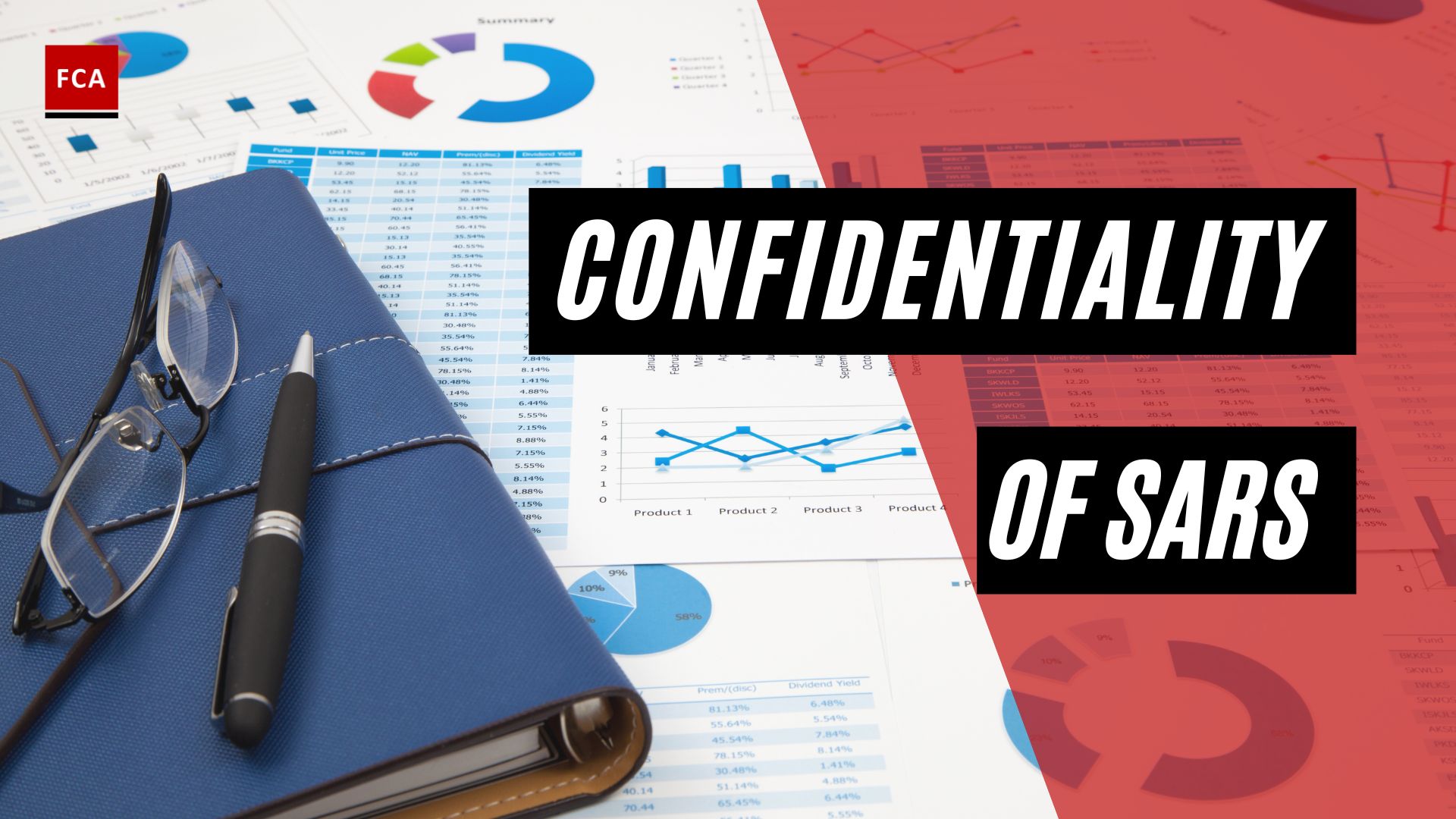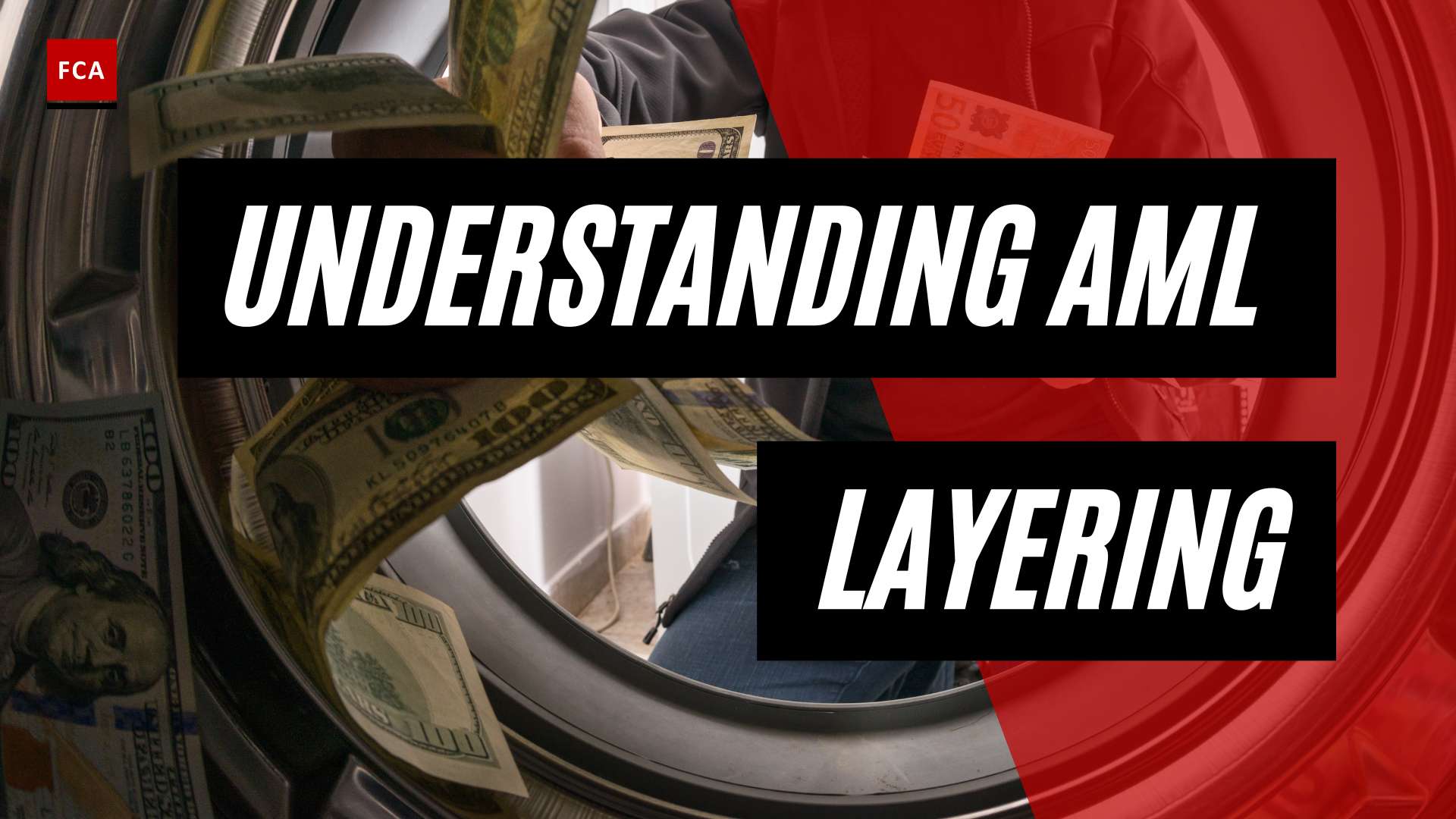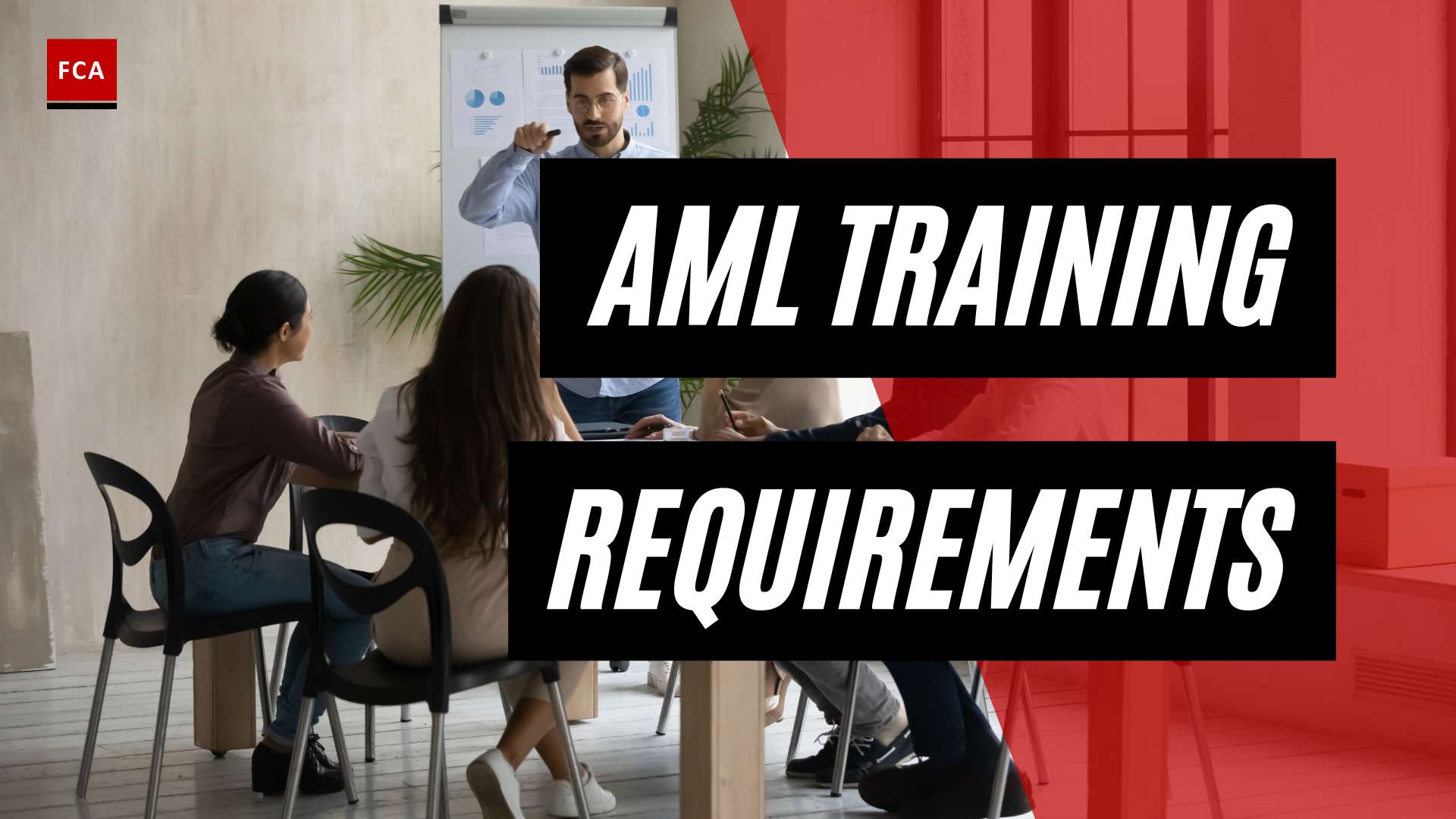Understanding AML Risk Assessment
In the world of anti-money laundering (AML) compliance, conducting a thorough and effective AML risk assessment is of utmost importance. AML risk assessment plays a critical role in identifying and mitigating the risks associated with money laundering and other illicit financial activities. By understanding the importance and elements of AML risk assessment, organizations can develop robust frameworks to combat financial crimes.
Importance of AML Risk Assessment
A well-developed AML risk assessment assists financial institutions in identifying the risks related to money laundering, terrorist financing, and other illicit financial activities. It enables organizations to understand the specific risk categories that are unique to their operations, such as products, services, customers, and geographic locations. By assessing these risks, organizations can develop appropriate internal controls, policies, procedures, and processes to mitigate and manage risk while ensuring compliance with regulatory requirements.
The AML risk assessment process allows banks and other financial institutions to identify any gaps in their controls and implement effective risk management strategies. Documenting the AML risk assessment in writing is considered a sound practice as it helps communicate these risks to relevant personnel within the organization. Regularly reviewing and updating the risk assessment is crucial to incorporate any changes in products, services, customers, and geographic locations and to ensure its continued relevance and effectiveness (BSA/AML Manual).
Elements of AML Risk Assessment
AML risk assessments should consider various elements to provide a comprehensive analysis of the risks involved. These elements include:
- Risk Categories: Identifying specific risk categories unique to the organization, such as products, services, customers, and geographic locations, is essential in assessing the varying degrees of risk. Understanding the risks associated with each category helps organizations strengthen their internal controls and tailor their risk management strategies accordingly.
- Transaction Analysis: Analyzing transaction data relative to products, services, customers, and geographic locations is crucial in quantifying the risks involved. This analysis helps organizations gain insights into potential patterns and anomalies that may indicate suspicious activities. The level and sophistication of transaction analysis may vary based on the organization’s size, complexity, and risk profile (BSA/AML Manual).
- Internal Controls: Evaluating the effectiveness of internal controls is a key element of AML risk assessment. This involves assessing the policies, procedures, and processes in place to mitigate and manage the identified risks. Organizations need to ensure that their internal controls align with regulatory requirements and industry best practices to effectively combat money laundering and other financial crimes.
By incorporating these elements into their AML risk assessment methodology, organizations can better understand the risks they face and implement appropriate risk management strategies. This enables them to comply with regulatory requirements, protect their reputation, and contribute to the global fight against financial crimes.
Next, we will explore the steps involved in conducting an AML risk assessment, including risk identification, risk assessment, and risk mitigation and management.
Steps in AML Risk Assessment
To effectively manage Anti-Money Laundering (AML) risks, organizations follow a systematic process known as AML risk assessment. This process consists of three key steps: risk identification, risk assessment, and risk mitigation and management.
Risk Identification
Risk identification involves identifying potential money laundering (ML) and terrorist financing (TF) risks. It is crucial to stay informed about common mechanisms employed by perpetrators and document the thought processes involved. Multiple starting points can make risk identification easier, such as assessing the level of risk posed by customers and checking if they are associated with people on recognized sanctions lists or negative publicity.
During this step, organizations should consider various factors that may contribute to ML/TF risks, including the nature of their business, the products and services they offer, the geographic locations they operate in, and the types of customers they serve. By thoroughly evaluating these factors, organizations can better understand the specific risks they may face.
Risk Assessment
Once potential ML/TF risks are identified, organizations move on to the risk assessment phase. This step involves a formal assessment of the identified risks, analyzing available information, judging the likelihood of these risks occurring, and evaluating the impact on various aspects such as transactions, customer relationships, business, sector, and economy.
During the risk assessment, risks are typically categorized as low, medium, or high, based on their probability and potential impact. This categorization helps organizations prioritize their efforts and allocate resources accordingly. It is important to properly document the risk assessment process, including the rationale behind risk ratings and any mitigating factors considered.
Risk Mitigation and Management
After completing the risk assessment, organizations move on to the final step of AML risk assessment, which involves risk mitigation and management. In this phase, organizations develop strategies and implement measures to mitigate the identified ML/TF risks.
Risk mitigation and management activities may include the implementation of robust internal controls, policies, and procedures to prevent, detect, and report suspicious activities. It may also involve conducting enhanced due diligence on high-risk customers, training employees to recognize and report potential ML/TF activities, and establishing ongoing monitoring mechanisms to detect any changes in risk profiles.
Regular review and updates to the AML risk assessment process are essential to ensure its effectiveness and alignment with changing regulatory requirements and emerging ML/TF risks. Compliance with regulatory requirements and periodic reassessment play a crucial role in maintaining an effective AML risk assessment methodology.
By following these steps, organizations can better understand and address the ML/TF risks they face, enabling them to develop effective controls and strategies to combat money laundering and terrorist financing activities.
Components of an Effective AML Risk Assessment Methodology
To ensure the effectiveness of an Anti-Money Laundering (AML) risk assessment methodology, several key components need to be incorporated. These components help organizations identify, assess, and mitigate the risks associated with financial crime. The three essential components of an effective AML risk assessment methodology are a risk-based approach, compliance with regulatory requirements, and periodic review and updates.
Risk-Based Approach
A risk-based approach is fundamental to an effective AML risk assessment methodology. It involves a comprehensive evaluation of risks, taking into account various factors such as the geographical location, customer base, products and services offered, and delivery channels utilized by the institution. By assessing these risks, organizations can prioritize their efforts and allocate resources accordingly to mitigate the highest-risk areas.
A risk-based approach requires organizations to develop risk models or scorecards that assign risk ratings to customers, accounts, and transactions. These ratings help in identifying and monitoring high-risk relationships and activities, enabling organizations to focus their resources where they are most needed. Implementing a risk-based approach ensures that AML efforts are targeted and proportionate to the risks faced by the institution.
Compliance with Regulatory Requirements
Compliance with regulatory requirements is crucial for an effective AML risk assessment methodology. Financial institutions must adhere to regulatory guidelines and standards set by authorities such as the Financial Action Task Force (FATF) and local regulatory bodies. These regulations provide a framework for conducting risk assessments and implementing appropriate controls to mitigate money laundering and terrorist financing risks.
Organizations need to stay updated with changing AML regulations and ensure that their risk assessment methodology remains aligned with the evolving regulatory landscape. This includes understanding emerging trends, typologies, and evolving regulatory expectations to ensure that the institution’s AML program remains effective and compliant with industry standards.
Periodic Review and Updates
An AML risk assessment methodology should not be a one-time exercise. Regular review and updates are necessary to ensure its ongoing effectiveness. The financial landscape is dynamic, and risks constantly evolve. Therefore, organizations need to periodically reassess their risk profiles, taking into account changes in the operating environment, customer base, products and services, and regulatory requirements.
By conducting periodic reviews, organizations can identify any gaps in their risk assessment methodology and make necessary adjustments to address emerging risks or changing circumstances. This ensures that the risk assessment remains relevant and up to date, enabling organizations to stay ahead of potential threats and meet regulatory expectations.
In conclusion, an effective AML risk assessment methodology incorporates a risk-based approach, compliance with regulatory requirements, and regular review and updates. By adopting these components, organizations can enhance their ability to identify, assess, and mitigate the risks associated with money laundering and terrorist financing. This not only helps in safeguarding the integrity of the financial system but also demonstrates a commitment to combating financial crime effectively.
Enhancing AML Risk Assessment Methodology
To ensure the effectiveness of an institution’s AML risk assessment methodology, it is crucial to continuously enhance and update the approach. This involves leveraging technology and data analytics, as well as incorporating emerging trends and regulatory expectations.
Leveraging Technology and Data Analytics
The effectiveness of an institution’s AML risk assessment methodology can be significantly enhanced by leveraging technology, data analytics, and automated monitoring tools. These advancements improve risk detection capabilities and streamline compliance processes. By harnessing the power of technology, institutions can better identify suspicious activities, detect patterns, and mitigate potential risks more efficiently, ultimately strengthening their overall AML program.
Technology-driven solutions such as AML risk assessment software enable the automation of various tasks, including data collection, analysis, and reporting. These tools can process large volumes of data, uncover hidden patterns, and identify potential red flags that may go unnoticed through manual processes. By leveraging technology and data analytics, institutions can enhance their risk assessment methodologies, improve efficiency, and stay ahead of evolving AML risks and challenges.
Incorporating Emerging Trends and Regulatory Expectations
An effective AML risk assessment methodology should not only consider current risks but also anticipate and adapt to emerging trends and evolving regulatory expectations. Financial crimes, money laundering techniques, and regulatory requirements are constantly evolving. It is crucial for institutions to stay informed about the latest typologies, methods, and regulatory updates.
By incorporating emerging trends and regulatory expectations into their risk assessment methodologies, institutions can proactively identify and assess new risks. This includes staying updated on industry best practices, emerging technologies, and regulatory guidance. Regularly reviewing and updating risk assessment processes ensures that the institution’s AML program remains effective, compliant, and aligned with industry standards.
By leveraging technology, data analytics, and staying abreast of emerging trends and regulatory expectations, institutions can enhance their AML risk assessment methodologies. This proactive approach strengthens the institution’s ability to identify and mitigate risks, protect against financial crimes, and maintain compliance with regulatory requirements.
Pre-configured Risk Scenarios
The methodology includes pre-configured risk scenarios that assist organizations in evaluating AML risks more effectively and efficiently. These scenarios provide a structured approach to assess different risk factors and potential vulnerabilities within an organization’s operations.
By utilizing these pre-configured risk scenarios, organizations can streamline their risk assessment processes and ensure consistent evaluation of risks across various areas of their operations. This standardized approach helps maintain compliance with regulatory requirements and enables organizations to identify and address emerging risks more promptly.
The AML risk assessment methodology serves as a valuable resource for financial institutions, providing them with a comprehensive framework to enhance their AML programs. By utilizing this methodology, organizations can better understand and manage their AML risks, ultimately contributing to the global efforts in combating financial crimes.
AML Risk Assessment Methodology in Banking
In the realm of banking, implementing an effective AML (Anti-Money Laundering) risk assessment methodology is crucial for identifying and mitigating ML/TF (Money Laundering/Terrorist Financing) risks. This section explores the key components involved in AML risk assessment within the banking sector, including BSA/AML risk assessment, developing a well-structured risk assessment, and evaluating ML/TF risks.
BSA/AML Risk Assessment
The BSA/AML (Bank Secrecy Act/Anti-Money Laundering) risk assessment process is a fundamental aspect of AML compliance in banking. It assists banks in identifying ML/TF and other illicit financial activity risks, allowing them to develop appropriate internal controls, policies, procedures, and processes to mitigate and manage risk while complying with regulatory requirements (BSA/AML Manual).
A well-developed BSA/AML risk assessment provides a comprehensive analysis of a bank’s ML/TF and other illicit financial activity risks. It involves identifying specific risk categories unique to the bank, such as products, services, customers, and geographic locations, and analyzing the information to assess the risks within these categories (BSA/AML Manual). Documenting the BSA/AML risk assessment in writing is a sound practice to effectively communicate these risks to appropriate bank personnel.
Updating the BSA/AML risk assessment as changes occur in products, services, customers, and geographic locations is essential to ensure it remains accurate and reflective of the ML/TF and other illicit financial activity risks within the bank. Examiners play a crucial role in assessing whether the bank has developed a BSA/AML risk assessment that effectively identifies ML/TF and other illicit financial activity risks across all product lines, customers, services, and geographic locations.
Developing a Well-Structured Risk Assessment
Developing a well-structured risk assessment in banking involves a systematic approach to identify, assess, and manage AML risks. The risk assessment process should encompass various factors, including internal and external risk indicators, transactional data analysis, customer due diligence, and ongoing monitoring. By considering these factors, banks can gain a comprehensive understanding of their AML risk exposure.
A well-structured risk assessment should align with regulatory requirements and industry best practices. It should identify potential vulnerabilities and gaps in controls, enabling banks to implement effective risk mitigation measures. Additionally, the risk assessment should be periodically reviewed and updated to reflect changes in the banking landscape, emerging risks, and regulatory expectations.
Evaluating ML/TF Risks
Evaluating ML/TF risks is a critical component of the AML risk assessment methodology in banking. Banks must assess the likelihood and potential impact of ML/TF activities associated with their products, services, customers, and geographic locations. This evaluation helps banks prioritize their resources and implement appropriate risk mitigation measures.
To evaluate ML/TF risks effectively, banks must consider various factors. These may include the nature of their business, customer profiles, transaction patterns, and the geographical locations they operate in. By conducting a thorough evaluation, banks can identify high-risk areas and tailor their AML compliance efforts accordingly.
By implementing a robust AML risk assessment methodology, banks can enhance their ability to detect and prevent money laundering and terrorist financing activities. The methodology should be dynamic, adaptable, and aligned with regulatory requirements, ensuring banks stay ahead of evolving risks and maintain effective AML compliance measures.
AML Risk Assessment Framework
To effectively combat money laundering and meet regulatory requirements, financial institutions and organizations utilize an AML risk assessment framework. This framework involves identifying and examining crucial risk factors, understanding the AML risk exposure, and implementing appropriate strategies to prevent money laundering. Let’s explore the key components of an AML risk assessment framework: crucial risk factors, the role of risk models, and the benefits of AML risk assessment.
Crucial Risk Factors
AML risk assessment involves analyzing various risk factors that contribute to the potential for money laundering activities within a financial institution. These risk factors may include:
- Customer risk: Assessing the risk associated with individual customers, such as their geographic location, occupation, transaction patterns, and reputation.
- Product and service risk: Evaluating the risk associated with specific products and services offered by the institution, considering factors like complexity, accessibility, and potential misuse.
- Geographic risk: Analyzing the risk associated with operating in specific geographic regions, taking into account the prevalence of money laundering activities and the effectiveness of local AML regulations.
- Transaction risk: Examining the risk associated with specific transactions, including large and complex transactions, frequent cash transactions, and transactions with high-risk jurisdictions.
Identifying and understanding these crucial risk factors enables organizations to develop targeted risk mitigation strategies and allocate resources effectively.
Role of Risk Models
Risk models play a central role in AML risk assessment, providing a systematic approach to evaluating and quantifying the risk posed by customer relationships and activities. These models calculate a risk score or rating, such as high, medium, or low, to provide clarity on the level of risk associated with each customer or transaction. Risk models consider various factors, including customer attributes, transaction history, and external data sources, to generate an accurate risk assessment.
By leveraging risk models, organizations can prioritize their efforts and resources, focusing on customers and transactions with higher risk scores. This helps streamline compliance efforts, enhance due diligence procedures, and improve the overall effectiveness of AML risk assessment.
Benefits of AML Risk Assessment
Implementing an AML risk assessment methodology brings several benefits to organizations in their fight against financial crimes. These benefits include:
- Risk-based approach: AML risk assessment enables organizations to adopt a risk-based approach, allowing them to identify and allocate resources more efficiently based on the level of risk posed by customers, products, and transactions. This approach ensures that efforts are focused on high-risk areas, enhancing the effectiveness of AML compliance measures.
- Compliance with regulatory requirements: AML risk assessment is crucial for organizations in meeting regulatory obligations. By conducting comprehensive risk assessments, organizations can demonstrate compliance with AML regulations, such as the requirements set forth by regulatory bodies like the Financial Action Task Force (FATF).
- Continuous improvement: AML risk assessment is not a one-time process. It requires periodic review and updates to adapt to emerging trends, regulatory expectations, and changes in the threat landscape. By regularly reviewing and updating risk assessments, organizations can stay proactive in addressing new risks and strengthening their AML compliance measures.
Implementing an effective AML risk assessment framework empowers organizations to identify, assess, and mitigate the risks associated with money laundering activities. By effectively managing these risks, organizations can protect themselves, their customers, and the integrity of the financial system.
Challenges in AML Risk Assessment
Establishing an effective AML risk assessment methodology comes with its fair share of challenges. Let’s explore two key areas that pose challenges in this process: structured framework and iterative processes, and compliance and risk management.
Structured Framework and Iterative Processes
Developing a structured framework for AML risk assessment can be a complex task. It requires the identification of relevant risk factors, the establishment of risk criteria, and the creation of a systematic process to assess and manage risks. This structured framework ensures consistency, transparency, and effectiveness in identifying and evaluating risks.
However, maintaining an iterative process for regular revisions and updates to the risk assessment methodology is equally important. The financial landscape is constantly evolving, bringing new risks and challenges. A dynamic and responsive risk assessment process is necessary to adapt to emerging risks and evolving money laundering and terrorist financing methods. Regular reviews and updates allow organizations to address new threats and vulnerabilities, ensuring the risk assessment remains relevant and effective over time.
To assist in creating a structured framework and iterative processes, organizations may utilize tools such as an AML risk assessment template, AML risk assessment software, or an AML risk assessment matrix. These resources provide a foundation for building a comprehensive risk assessment methodology and facilitate the ongoing review and improvement of the process.
Compliance and Risk Management
Ensuring compliance with regulatory requirements is a critical challenge in AML risk assessment. Organizations must align their risk assessment methodology with applicable laws, regulations, and guidelines. This includes understanding and incorporating regulatory expectations, such as those set forth by the Financial Action Task Force (FATF), into the risk assessment process.
Compliance also involves accurately documenting and reporting the results of the risk assessment. An AML risk assessment report provides a comprehensive overview of the identified risks, the assessment process, and the mitigation strategies implemented. It serves as evidence of an organization’s commitment to risk management and compliance with regulatory obligations.
Risk management is another aspect that poses challenges in AML risk assessment. Once risks are identified and assessed, effective mitigation strategies must be implemented to reduce the likelihood and impact of money laundering and terrorist financing activities. This involves designing and implementing appropriate controls, policies, and procedures to manage and monitor identified risks.
By addressing the challenges of a structured framework and iterative processes, and ensuring compliance and effective risk management, organizations can enhance their AML risk assessment methodology. This enables them to stay ahead of evolving risks, protect their reputation, and contribute to the integrity of the global financial system.
To learn more about AML risk assessment and related topics, explore our articles on AML risk assessment methodology, AML risk assessment checklist, and AML risk assessment questionnaire.
Global Efforts in AML Risk Assessment
To combat the growing threat of money laundering and terrorist financing, global efforts in AML risk assessment have been crucial. One prominent organization at the forefront of these efforts is the Financial Action Task Force (FATF), which plays a central role in shaping international standards and promoting a risk-based approach in the global fight against financial crimes.
Financial Action Task Force (FATF)
Established in 1989, the FATF is an intergovernmental body that sets international standards and develops policies to combat money laundering, terrorist financing, and other related threats. The FATF’s recommendations provide a comprehensive framework for countries and financial institutions to assess and address the risks associated with money laundering and terrorist financing (FATF).
The FATF advocates for a risk-based approach in AML risk assessments, which involves identifying, understanding, and mitigating the risks posed by money laundering and terrorist financing. This approach takes into consideration the evolving nature of these risks, including the impact of new technologies that can both facilitate and disrupt AML/CFT activities (FATF).
Risk-Based Approach in Global Fight Against Financial Crimes
Embracing a risk-based approach is essential in the global fight against financial crimes. It enables countries and businesses to identify, assess, and understand the money laundering and terrorist financing risks they face. This approach allows for the allocation of resources and the implementation of measures that are commensurate with the identified risks (FATF).
By adopting a risk-based approach, countries and financial institutions can strike a balance between effectively combating money laundering and terrorist financing activities and supporting financial inclusion and innovation. It enables them to focus their efforts on high-risk areas while minimizing unnecessary burdens on low-risk areas. This approach ensures that resources are targeted where they are most needed, enhancing the effectiveness of AML risk assessment.
Continuous Improvement and Adaptability
In the ever-evolving landscape of financial crimes and technological advancements, AML risk assessment methodologies must continuously improve and adapt. The risk assessment process should be dynamic, responsive, and adaptable to emerging risks and evolving money laundering and terrorist financing methods. This continuous improvement ensures that AML risk assessments remain effective in detecting and combating financial crimes.
The FATF emphasizes the importance of periodic review and updates to AML risk assessments to incorporate new information, emerging trends, and regulatory expectations. By staying informed and up-to-date, countries and financial institutions can enhance their ability to identify and mitigate the risks associated with money laundering and terrorist financing effectively.
Global efforts in AML risk assessment, led by organizations like the FATF, play a pivotal role in maintaining the integrity of the global financial system. These efforts promote the adoption of risk-based approaches, encourage continuous improvement, and ensure that AML risk assessments remain effective in the fight against financial crimes.









